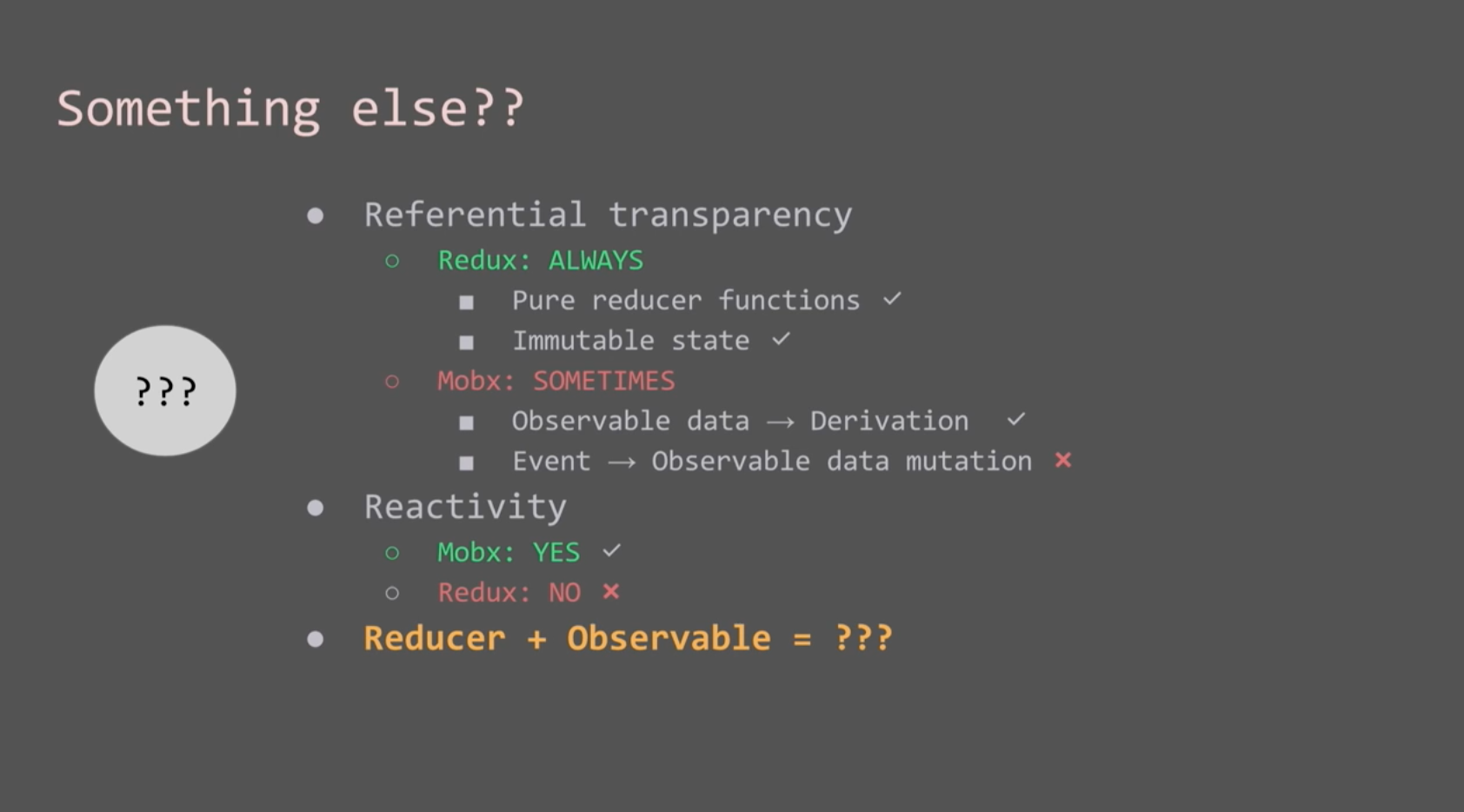

#Mobx vs redux code#
So, if you want to have the benefits of immutable state, closely work with Streams whether for the purposes of testing or integration with other code, observe state changes happening across the app from a single place ( BlocDelegate ) easily to allow for pain-free analytics and at the same time keep your code as simple as possible, BLoC is truly the best available option out there. On the other hand, Redux has one large store where all states are stored.

BIASED OPINION: The best documentation ever.Why would you leave it at just the matchers though when you can use the bloc_test package which, in my opinion, makes tests fun to write? State-management Developed using Functional Programming principles, Developed using Object-Oriented Programming principles.Dart is built with Streams in mind and testing if a particular sequence of states has been emitted is simple with stream matchers.Testing Streams is easy, testing Blocs is even easier.With the help of the BlocDelegate, you can know about any action the user takes in any BLoC without cluttering up your codebase with analytics code.Lately, I have been researching and using MobX and Redux for a project that would most likely evolve over the next few years into something to the scale of JIRA. Learning these patterns will help you leverage the best. TLDR MobX for 13 people or small apps, Redux for anything beyond that. The predictability of pure functions makes Redux much easier to test, maintain and scale than MobX. Explore popular libraries to manage state including Flux, Redux, MobX, Redux Sagas, and more. The purity and somewhat rigid approach of Redux is an advantage when it comes to scalability and debugging of applications. If it feels weird to you, try MobX, and try this, try that. (Which one in particular is not the point.) Now, create a feature branch and try to Redux everything. You then combine those slices into a store. Congrats, you know know, first hand, that something could be better. You create a slice of data with a name, give it an initial state, define reducers to mutate that data, and then a slice will provide functions you can call to actually cause the data to update. Good tooling for VS Code and IntelliJ/Android Studio The state management systems such as Redux and MobX are used to transfer state from components as a stand-alone testable unit to prevent certain situations. In this category, MobX is a clear winner. Redux works similar to Zustand but things are more verbose.However, you can use React Query along side most client state managers with zero issues. In this situation it's important to note that React Query is not a replacement for local/client state management. There are still some circumstances where an application might indeed have a massive amount of synchronous client-only state (like a visual designer or music production application), in which case, you will probably still want a client state manager. With those points in mind, the short answer is that React Query replaces the boilerplate code and related wiring used to manage cache data in your client-state and replaces it with just a few lines of code.įor a vast majority of applications, the truly globally accessible client state that is left over after migrating all of your async code to React Query is usually very tiny. are client-state libraries that can be used to store asynchronous data, albeit inefficiently when compared to a tool like React Query React Query is a server-state library, responsible for managing asynchronous operations between your server and client Reacts Context API provides a way to pass data through the component tree without having to pass props down manually.Well, let's start with a few important items: But its not really about MobX versus Redux, its about dependency graphs versus immutable state trees, right Redux is effectively an immutable state tree, at.


 0 kommentar(er)
0 kommentar(er)
